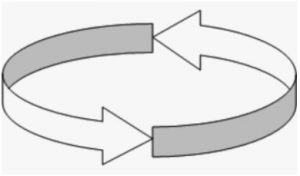Personal Protective Equipment – Head Protection
Personal Protective Equipment – Head protection

A 70-lb metal beam fell from the seventh storey of a condominium development and struck a worker on the head, face, and torso. The man was taken to hospital in serious condition but survived. Police credit the man’s hard hat with saving his life.
Explain dangers
A hard hat can protect you from cuts, scrapes, and bruises. It can protect you from falling objects, which can cause severe damage to the head and spine. It can prevent electric shock and limit your exposure to UV radiation from the sun.
Identify controls
Hard hats are mandatory for every worker at all times on a construction project in Ontario. Keep the following points in mind to ensure that you get the best use out of your hard hat.
• Use the correct type of hard hat for the job. The hard hat should be labeled with the CSA or ANSI Type and Class of protection.
• A Class E hard hat is required for construction and utility projects. It provides electrical protection up to 20,000 volts.
• Type I and Type II hard hats meet the CSA and ANSI standard for impact protection. Type I hard hats protect the top of the head, while Type II hard hats protect both the top and the sides of the head. Type II hard hats are recommended for use on construction projects.
• Hard hats that are poorly maintained or improperly used can fail. It’s important that you follow the manufacturer’s instructions.
• Inspect your hard hat every day before you use it.
• Clean your hard hat using mild soap or a cleaning agent recommended by the manufacturer. Never use a cleaning solvent.
• Never wear a baseball cap under your hard hat.
• Never paint a hard hat or make holes in a hard hat.
• A hard hat should normally be worn facing forward. It may be worn backwards only if it has a reverse orientation mark.

• Never store your hard hat in the rear window of your car—intense sunlight can make it age more quickly.
• Never spray your hard hat with insect repellant—it can damage the material.
• Hard hats are not made to last forever. Find out the useful life of your hard hat by contacting the manufacturer or reading the manufacturer’s instructions.
Demonstrate
Together as a crew, inspect your hard hats.
Check the shell for cracks, dents, deep cuts, or gouges. If the surface appears dull or chalky rather than shiny, the hard hat may have become brittle.
Check the suspension for cracks or tears. Make sure straps are not twisted, cut, or frayed.
If you find any signs of damage or degradation, remove the hard hat from service immediately.
For more information, visit the IHSA website.
